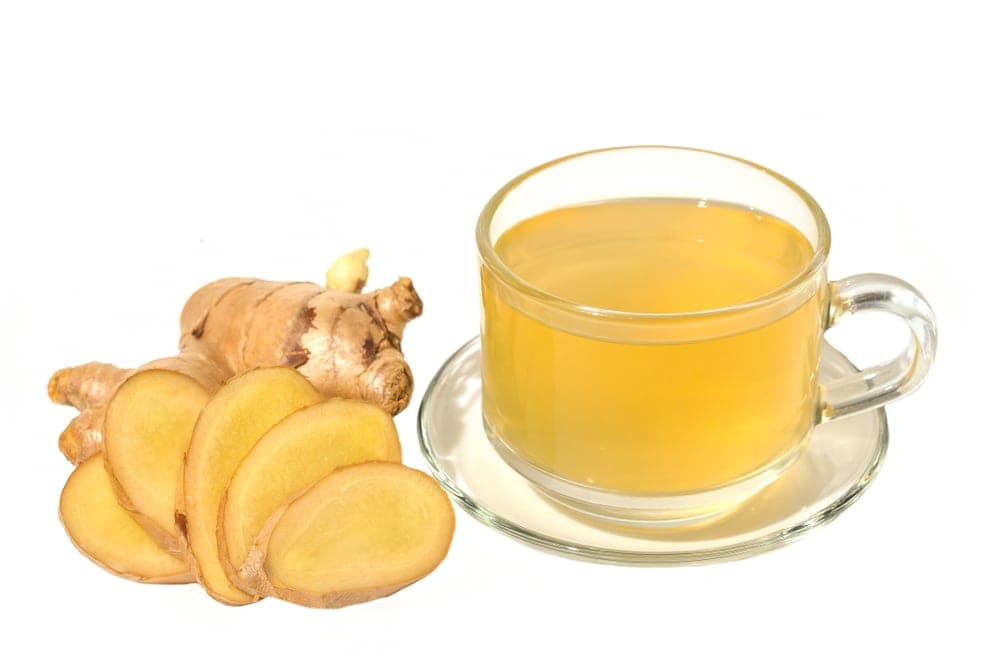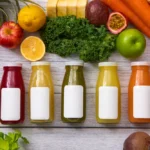If you’ve ever wondered how to juice ginger effectively, you’re in for a treat. Ginger, known for its vibrant flavor and potential health benefits, can be transformed into a zesty elixir that adds a delightful kick to your beverages and recipes.
This comprehensive guide will explore various methods and tips for juicing ginger, ensuring you can unlock its full potential in your culinary adventures. Whether you’re a ginger aficionado or a novice, get ready to infuse your life with the invigorating essence of this remarkable root.
Surperizing facts about Ginger juice?
Ginger juice, derived from the pungent and aromatic ginger root, offers a refreshing flavor and potential health benefits. Whether used as a zesty addition to beverages, a spicy touch in culinary creations, or a natural remedy for various ailments, ginger juice’s versatility makes it a staple in many kitchens. Its distinct flavor profile and potential therapeutic properties make it an appealing choice for those seeking a refreshing and healthful ingredient to enhance their daily diet.
Ginger Juice – Nutritional Info
| Nutrient | Amount per 100g |
| Calories | 80 |
| Total Fat | 0g |
| Saturated Fat | 0g |
| Cholesterol | 0mg |
| Sodium | 13mg |
| Total Carbohydrate | 18g |
| Dietary Fiber | 0.2g |
| Sugars | 0g |
| Protein | 1.8g |
Ingredients Needed To Juice Ginger
To juice ginger, you typically need the following ingredients:
- Fresh ginger root
- Clean, cold water (optional for dilution)
- Sweeteners (optional, such as honey or sugar, for flavor)
- Additional flavorings (optional, like lemon or mint, for variation)
These ingredients may vary depending on your preferences and the specific ginger juice recipe you’re following, but this basic list covers the essentials for making ginger juice.

How To Select The Best Ginger For Juicing?
When selecting ginger for juicing, there are a few key factors to consider to ensure you choose the best quality ginger for your needs. Here are some essential subheadings to consider:
Appearance and Texture
Look for ginger that is firm, smooth, and free from wrinkles. The skin should be taut and not shriveled. Avoid any ginger that feels soft or looks moldy.
Aroma
Choose ginger with a strong, spicy aroma. The fragrance should be fresh and invigorating, indicating the ginger is flavorful and aromatic.
Taste
If possible, taste a small piece of the ginger before purchasing. It should have a zesty, slightly sweet flavor with a hint of heat. Avoid any ginger that tastes dull or has a bitter aftertaste.
Organic vs. Conventional
Consider whether you prefer organic or conventional ginger. Organic ginger is grown without synthetic pesticides or fertilizers, while traditional ginger may have been treated with chemicals.
Size and Shape
Select pieces of plump ginger that have a good weight for their size. Irregular shapes are fine as long as the ginger feels heavy and solid.
Should You Peel Ginger Before Juicing It?
Yes, it’s generally recommended to peel ginger before juicing it. While the skin of ginger is edible and contains some nutrients, it can be tough and fibrous, affecting the texture and flavor of the juice. Peeling the ginger helps achieve a smoother consistency and removes any potential bitterness from the skin, resulting in a more pleasant and flavorful ginger juice.
How To Make Ginger Juice step by step?
To make ginger juice, you will need fresh ginger, water, a blender or juicer, a fine mesh strainer or cheesecloth, and a container to collect the juice. Here are the steps to make ginger juice:
Prepare the ginger
Start peeling the fresh ginger using a vegetable peeler or a spoon to scrape off the skin. Cut the ginger into small pieces to make it easier to blend.
Blend the ginger
Place the ginger pieces into a blender or juicer. Add a small amount of water to help with the blending process. Blend the ginger until it forms a smooth puree.
Strain the mixture
Place a fine mesh strainer or a piece of cheesecloth over a bowl or container. Pour the blended ginger mixture over the strainer or cheesecloth, allowing the liquid to separate from the pulp.
Extract the juice
Use a spoon or spatula to press down on the ginger pulp, extracting as much juice as possible into the container below.
Store the juice
Transfer the extracted ginger juice into a clean, airtight container. Store it in the refrigerator for up to one week.
Optional flavorings
You can add lemon juice, honey, or other natural sweeteners to enhance the flavor of your ginger juice.
Potential Health Benefits Of Ginger Juice
Here are some benefits of ginger juice:
Anti-inflammatory Properties
Ginger juice contains gingerol, a bioactive compound with potent anti-inflammatory effects that may help reduce inflammation.
Digestive Aid
Consuming ginger juice may help alleviate digestive issues such as indigestion, bloating, and nausea due to its ability to stimulate the production of digestive enzymes.

Immune-Boosting Effects
The high levels of antioxidants in ginger juice can help strengthen the immune system and protect the body from oxidative stress and infections.
Pain Relief
Ginger juice has been traditionally used as a natural remedy for pain relief, particularly for muscle and joint pain.
Potential Anti-Cancer Properties
Some studies suggest that ginger juice may have potential anti-cancer properties due to its ability to inhibit the growth of cancer cells.
Heart Health
Ginger juice may contribute to heart health by lowering cholesterol levels and improving blood circulation.
Other Ingredients Can You Combine With Ginger For Added Flavor
Other ingredients that can be combined with ginger for added flavor include:
Citrus Fruits
Citrus fruits like lemon, lime, or orange can complement ginger’s spicy and warm flavor, adding a refreshing and tangy twist to dishes or beverages.
Garlic
Combining ginger with garlic can create a flavorful and aromatic base for various savory dishes, enhancing the overall depth of flavor.
Honey
The natural sweetness of honey can balance out the spiciness of ginger, creating a harmonious blend of flavors in both sweet and savory recipes.
Soy Sauce
When paired with ginger, soy sauce adds a savory umami flavor, creating a delicious combination commonly used in Asian cuisine.
Mint
Adding mint to ginger-infused dishes or beverages can provide a cooling and refreshing element, making it an ideal combination for teas, salads, or desserts.
Recommended Ratio Of Ginger To Other Ingredients When Making Ginger Juice
The recommended ratio of ginger to other ingredients when making ginger juice can vary depending on personal taste preferences and the desired intensity of the ginger flavor. A common guideline is to use approximately 1 to 2 inches (2.5 to 5 cm) of ginger root for a single serving of juice and then adjust accordingly based on your preference for spiciness.
You can balance the strong ginger flavor by adding water, lemon juice, or sweeteners like honey or sugar to achieve the desired taste and dilution level. Experimentation will help you find the perfect ginger-to-other-ingredients ratio that suits your palate.
How To Store Ginger Juice?
To store ginger juice, you can follow these steps:
- Store ginger juice in an airtight container in the refrigerator
- Use a glass or plastic container with a tight-fitting lid to prevent oxidation and maintain freshness
- Label the container with the date of extraction to keep track of its freshness
- Consume the ginger juice within a week for optimal flavor and potency
- If freezing, pour the ginger juice into ice cube trays and freeze. Once frozen, transfer the ginger juice cubes to a resealable freezer bag and store them in the freezer for up to 6 months
Conclusion
In conclusion, mastering the art of ginger juice extraction opens up a world of culinary possibilities and healthful benefits. As we wrap up this zesty guide to juicing ginger, remember that the intensity of ginger’s kick is entirely in your hands. Whether you seek its invigorating zest in a refreshing beverage or wish to elevate the flavors of your favorite dishes, ginger juice offers endless versatility.
So, embark on your ginger-juicing journey, experiment with various recipes, and relish the unique, vibrant flavors that this remarkable root brings to your table. It’s not just about the taste; it’s about the experience of infusing every sip and bite with ginger’s fresh, fiery essence. Cheers to your zesty culinary adventures!
FAQs
How Do You Juice Fresh Ginger?
To juice fresh ginger, peel it, cut it into small pieces, and use a juicer or blend with water, then strain.
What Is The Best Way To Extract Ginger Juice?
The best way to extract ginger juice is by using a juicer, but blending with water and straining is an effective alternative.
How Can I Juice Ginger Without A Juicer?
You can juice ginger without a juicer by blending it with water and straining it through a fine sieve or cheesecloth.
Do I Have To Peel Ginger Before Juicing?
Peeling ginger before juicing is recommended to achieve a smoother and more pleasant juice.
Do You Have To Peel Ginger Before Juicing?
Yes, peeling ginger before juicing is advisable for better flavor and texture.
Ginger Juice Is Too Strong. Is There Anything Else I Can Add?
If ginger juice is too strong, add water sweeteners like honey or sugar or combine it with other fruit juices to mellow the intensity.





![5 Best Ways for Juice Storage - [ Store Fruits & Vegetables Juice ] Juice Storage](https://juicerhunter.com/wp-content/uploads/2024/01/Juice-Storage-150x150.webp)
